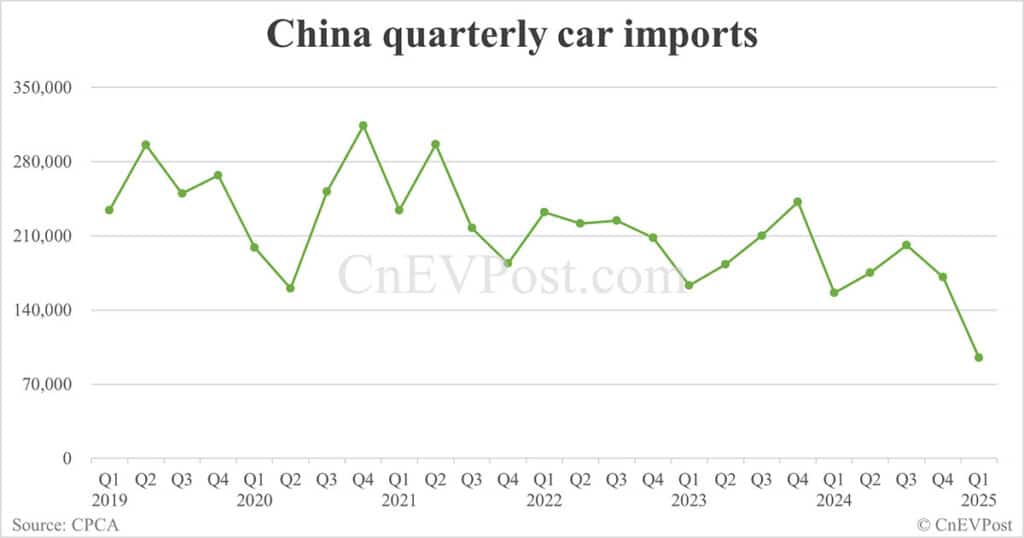China experienced a significant decline in automobile imports during the first quarter of 2025, according to data from the China Passenger Car Association (CPCA). Imports totaled 95,000 vehicles, marking a 39% decrease compared to the same period last year. This sharp reduction represents the lowest quarterly import figures recorded by the CPCA.
The decline is attributed to a more complex international environment and the increasing prominence of domestic automotive brands. Imports from the United States saw a particularly steep drop of 66 percent, with only 8,870 vehicles entering the Chinese market in the first quarter. This trend continued into March, exacerbating the overall decline in imports.
Japan remained the leading exporter of vehicles to China, supplying 30,517 units, followed by Germany with 23,695 vehicles. Despite the overall decrease in imports, gasoline-powered passenger cars continue to dominate the market, while new energy vehicles (NEVs) accounted for only 2.6 percent of imports. In March alone, imports decreased by 27 percent year-on-year, with a total of 39,000 vehicles imported, indicating a shrinking demand for gasoline vehicles within the country.
Cui Dongshu, secretary-general of the CPCA, highlighted that the reduction in vehicle imports from the United States has been ongoing, with numbers dropping from 280,000 in 2017 to 109,000 in 2024. This decline is partly influenced by the strategic decisions of major automakers, such as Tesla, which recently halted orders for its imported Model S and Model X vehicles in China amid concerns related to the ongoing US-China trade tensions.
In response to the decreasing demand for both gasoline and imported vehicles, Cui emphasized the need for China to develop more sophisticated import models. This approach aims to sustain a reasonable volume of vehicle imports in the future, balancing the market dynamics between domestic production and international imports.
The observed trends reflect broader shifts in the Chinese automotive market, where local manufacturers are gaining market share and international brands face increasing challenges. As the industry evolves, both domestic and international stakeholders will need to navigate the changing landscape to address the emerging opportunities and obstacles.
Source: Cnevpost
















